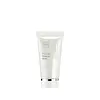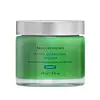What's inside
What's inside
 Key Ingredients
Key Ingredients

 Benefits
Benefits

 Concerns
Concerns

 Ingredients Side-by-side
Ingredients Side-by-side

Water
Skin ConditioningButylene Glycol
HumectantGlycerin
HumectantC12-15 Alkyl Benzoate
AntimicrobialCaprylic/Capric Triglyceride
MaskingPropylheptyl Caprylate
EmollientCetearyl Alcohol
EmollientMacadamia Integrifolia Seed Oil
Skin ConditioningPentylene Glycol
Skin ConditioningHydrogenated Coco-Glycerides
EmollientPhenoxyethanol
PreservativeSodium Acrylate/Sodium Acryloyldimethyl Taurate Copolymer
Emulsion StabilisingPolyisobutene
Dimethicone
EmollientParfum
MaskingAcrylates/C10-30 Alkyl Acrylate Crosspolymer
Emulsion StabilisingGlyceryl Caprylate
EmollientSerica Powder
Skin ConditioningBisabolol
MaskingTetrasodium Glutamate Diacetate
Caprylyl Glycol
EmollientSodium Hydroxide
BufferingSorbitan Oleate
EmulsifyingCaprylyl/Capryl Glucoside
CleansingSodium Hyaluronate
HumectantImperata Cylindrica Root Extract
Skin ConditioningLecithin
EmollientHydrolyzed Pearl
Skin ConditioningMaris Sal
Skin ConditioningCaprylhydroxamic Acid
Carbomer
Emulsion StabilisingSodium Citrate
BufferingAscorbyl Palmitate
AntioxidantTocopherol
AntioxidantCitric Acid
BufferingBiotin
AntiseborrhoeicWater, Butylene Glycol, Glycerin, C12-15 Alkyl Benzoate, Caprylic/Capric Triglyceride, Propylheptyl Caprylate, Cetearyl Alcohol, Macadamia Integrifolia Seed Oil, Pentylene Glycol, Hydrogenated Coco-Glycerides, Phenoxyethanol, Sodium Acrylate/Sodium Acryloyldimethyl Taurate Copolymer, Polyisobutene, Dimethicone, Parfum, Acrylates/C10-30 Alkyl Acrylate Crosspolymer, Glyceryl Caprylate, Serica Powder, Bisabolol, Tetrasodium Glutamate Diacetate, Caprylyl Glycol, Sodium Hydroxide, Sorbitan Oleate, Caprylyl/Capryl Glucoside, Sodium Hyaluronate, Imperata Cylindrica Root Extract, Lecithin, Hydrolyzed Pearl, Maris Sal, Caprylhydroxamic Acid, Carbomer, Sodium Citrate, Ascorbyl Palmitate, Tocopherol, Citric Acid, Biotin
Water
Skin ConditioningGlycerin
HumectantAlcohol Denat.
AntimicrobialDipropylene Glycol
HumectantDimethicone
EmollientButylene Glycol
HumectantPropylene Glycol
HumectantPEG-8
HumectantAmmonium Polyacryloyldimethyl Taurate
Emulsion StabilisingPhenoxyethanol
PreservativeCarbomer
Emulsion StabilisingDimethiconol
EmollientSodium Hyaluronate
HumectantOlea Europaea Leaf Extract
PerfumingPalmitoyl Olive Leaf Extract
AntioxidantSodium Hydroxide
BufferingTetrasodium EDTA
Sodium Citrate
BufferingParfum
MaskingAcetyl Dipeptide-1 Cetyl Ester
Skin ConditioningCucumis Sativus Fruit Extract
EmollientT-Butyl Alcohol
PerfumingSodium Benzoate
MaskingCitrus Grandis Extract
AntimicrobialHydrolyzed Grape Fruit Extract
HumectantToluene Sulfonic Acid
Benzyl Benzoate
AntimicrobialCellulose Acetate Butyrate
Benzyl Alcohol
PerfumingLinalool
PerfumingWater, Glycerin, Alcohol Denat., Dipropylene Glycol, Dimethicone, Butylene Glycol, Propylene Glycol, PEG-8, Ammonium Polyacryloyldimethyl Taurate, Phenoxyethanol, Carbomer, Dimethiconol, Sodium Hyaluronate, Olea Europaea Leaf Extract, Palmitoyl Olive Leaf Extract, Sodium Hydroxide, Tetrasodium EDTA, Sodium Citrate, Parfum, Acetyl Dipeptide-1 Cetyl Ester, Cucumis Sativus Fruit Extract, T-Butyl Alcohol, Sodium Benzoate, Citrus Grandis Extract, Hydrolyzed Grape Fruit Extract, Toluene Sulfonic Acid, Benzyl Benzoate, Cellulose Acetate Butyrate, Benzyl Alcohol, Linalool
Ingredients Explained
These ingredients are found in both products.
Ingredients higher up in an ingredient list are typically present in a larger amount.
Butylene Glycol (or BG) is used within cosmetic products for a few different reasons:
Overall, Butylene Glycol is a safe and well-rounded ingredient that works well with other ingredients.
Though this ingredient works well with most skin types, some people with sensitive skin may experience a reaction such as allergic rashes, closed comedones, or itchiness.
Learn more about Butylene GlycolCarbomer is a polymer of acrylic acid. Its main role is to create a gel consistency.
A high amount of carbomer can cause pilling or balling up of products. Don't worry, most products contain 1% or less of carbomer.
Dimethicone is a type of synthetic silicone created from natural materials such as quartz.
What it does:
Dimethicone comes in different viscosities:
Depending on the viscosity, dimethicone has different properties.
Ingredients lists don't always show which type is used, so we recommend reaching out to the brand if you have questions about the viscosity.
This ingredient is unlikely to cause irritation because it does not get absorbed into skin. However, people with silicone allergies should be careful about using this ingredient.
Note: Dimethicone may contribute to pilling. This is because it is not oil or water soluble, so pilling may occur when layered with products. When mixed with heavy oils in a formula, the outcome is also quite greasy.
Learn more about DimethiconeGlycerin is already naturally found in your skin. It helps moisturize and protect your skin.
A study from 2016 found glycerin to be more effective as a humectant than AHAs and hyaluronic acid.
As a humectant, it helps the skin stay hydrated by pulling moisture to your skin. The low molecular weight of glycerin allows it to pull moisture into the deeper layers of your skin.
Hydrated skin improves your skin barrier; Your skin barrier helps protect against irritants and bacteria.
Glycerin has also been found to have antimicrobial and antiviral properties. Due to these properties, glycerin is often used in wound and burn treatments.
In cosmetics, glycerin is usually derived from plants such as soybean or palm. However, it can also be sourced from animals, such as tallow or animal fat.
This ingredient is organic, colorless, odorless, and non-toxic.
Glycerin is the name for this ingredient in American English. British English uses Glycerol/Glycerine.
Learn more about GlycerinParfum is a catch-all term for an ingredient or more that is used to give a scent to products.
Also called "fragrance", this ingredient can be a blend of hundreds of chemicals or plant oils. This means every product with "fragrance" or "parfum" in the ingredients list is a different mixture.
For instance, Habanolide is a proprietary trade name for a specific aroma chemical. When used as a fragrance ingredient in cosmetics, most aroma chemicals fall under the broad labeling category of “FRAGRANCE” or “PARFUM” according to EU and US regulations.
The term 'parfum' or 'fragrance' is not regulated in many countries. In many cases, it is up to the brand to define this term.
For instance, many brands choose to label themselves as "fragrance-free" because they are not using synthetic fragrances. However, their products may still contain ingredients such as essential oils that are considered a fragrance by INCI standards.
One example is Calendula flower extract. Calendula is an essential oil that still imparts a scent or 'fragrance'.
Depending on the blend, the ingredients in the mixture can cause allergies and sensitivities on the skin. Some ingredients that are known EU allergens include linalool and citronellol.
Parfum can also be used to mask or cover an unpleasant scent.
The bottom line is: not all fragrances/parfum/ingredients are created equally. If you are worried about fragrances, we recommend taking a closer look at an ingredient. And of course, we always recommend speaking with a professional.
Learn more about ParfumPhenoxyethanol is a preservative that has germicide, antimicrobial, and aromatic properties. Studies show that phenoxyethanol can prevent microbial growth. By itself, it has a scent that is similar to that of a rose.
It's often used in formulations along with Caprylyl Glycol to preserve the shelf life of products.
Sodium Citrate is the sodium salts of citric acid. In skincare, it is used to alter pH levels and acts as a preservative.
Its main functions are to maintain the pH of a product and neutralize metal ions.
The acidity of our skin is maintained by our glands and skin biome; normal pH level of skin is slightly acidic (~4.75-5.5).
Being slightly acidic allows our skin to create an "acid mantle". This acid mantle is a thin barrier that protects our skin from bacteria and contaminants.
Learn more about Sodium CitrateSodium Hyaluronate is hyaluronic acid's salt form. It is commonly derived from the sodium salt of hyaluronic acid.
Like hyaluronic acid, it is great at holding water and acts as a humectant. This makes it a great skin hydrating ingredient.
Sodium Hyaluronate is naturally occurring in our bodies and is mostly found in eye fluid and joints.
These are some other common types of Hyaluronic Acid:
Learn more about Sodium HyaluronateSodium Hydroxide is also known as lye or caustic soda. It is used to adjust the pH of products; many ingredients require a specific pH to be effective.
In small amounts, sodium hydroxide is considered safe to use. However, large amounts may cause chemical burns due to its high alkaline.
Your skin has a natural pH and acid mantle. This acid mantle helps prevent harmful bacteria from breaking through. The acid mantle also helps keep your skin hydrated.
"Alkaline" refers to a high pH level. A low pH level would be considered acidic.
Learn more about Sodium HydroxideWater. It's the most common cosmetic ingredient of all. You'll usually see it at the top of ingredient lists, meaning that it makes up the largest part of the product.
So why is it so popular? Water most often acts as a solvent - this means that it helps dissolve other ingredients into the formulation.
You'll also recognize water as that liquid we all need to stay alive. If you see this, drink a glass of water. Stay hydrated!
Learn more about Water